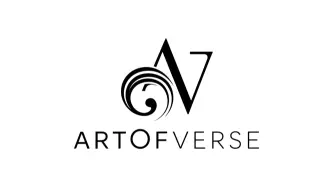The United States is home to one of the largest and most diverse publishing industries in the world. With a wide range of genres, formats, and markets, book publishers in USA cater to every kind of reader, from avid fiction fans to professionals seeking specialized knowledge. This article explores the publishing landscape in the USA, highlighting major publishers, types of publishing, and tips for aspiring authors looking to get published.
Types of Book Publishers in the USA
- Traditional Publishers
These publishers take care of everything, from editing and design to distribution and marketing. Prominent examples include the “Big Five” publishing houses:- Penguin Random House
- HarperCollins
- Simon & Schuster
- Hachette Book Group
- Macmillan Publishers
- Traditional publishers often focus on a mix of bestselling authors and emerging talent, offering widespread distribution and global reach.
- Independent Publishers
Also known as “indie publishers,” these companies are smaller and often cater to niche markets. They may specialize in specific genres, such as science fiction, poetry, or regional literature. Examples include Chronicle Books, Algonquin Books, and Graywolf Press. Independent publishers are more accessible for debut authors and offer a personalized approach. - Academic and Educational Publishers
Academic publishers like Pearson Education, McGraw-Hill, and Wiley focus on educational content, textbooks, and research publications. These publishers play a crucial role in shaping academic and professional learning. - Self-Publishing Platforms
With the rise of technology, self-publishing has become a viable option for authors who wish to retain control over their work. Platforms like Amazon Kindle Direct Publishing (KDP), IngramSpark, and Lulu allow authors to publish and distribute their books independently.
Major Book Publishers in the USA
- Penguin Random House
Known for its extensive catalog across genres, Penguin Random House is the largest trade book publisher globally. It represents authors like John Grisham and Margaret Atwood, offering unmatched resources and marketing expertise. - HarperCollins
This major publisher is renowned for its diverse imprints, such as Harper Perennial and Avon Books. It publishes a wide array of genres, from literary fiction to self-help and young adult literature. - Simon & Schuster
Simon & Schuster is a prominent name in both fiction and nonfiction, publishing bestsellers and critically acclaimed works. It has imprints dedicated to specific genres, making it a versatile choice for authors. - Hachette Book Group
Hachette publishes notable authors like J.K. Rowling and James Patterson. It is a leader in trade and commercial publishing with a strong focus on fiction. - Macmillan Publishers
Macmillan is known for its prestigious imprints like Farrar, Straus and Giroux, and Tor Books. It is a favorite among authors of literary and speculative fiction.
How to Get Published in the USA
- Research Publishers
Understand which publishers align with your genre and target audience. For example, if you write science fiction, you might consider Tor Books or Baen Books. - Find a Literary Agent
For traditional publishing, having a literary agent is crucial. Agents represent your work to publishers and negotiate contracts on your behalf. - Submit a Query Letter
A well-crafted query letter introduces your book idea to publishers or agents. Include a brief summary, target audience, and why your book is unique. - Consider Self-Publishing
If you prefer more control or have a niche audience, self-publishing might be the right choice. Platforms like Amazon KDP allow you to publish and sell your book globally. - Build an Online Presence
A strong author platform can attract publishers and readers alike. Use social media, blogs, or a personal website to showcase your work and engage with your audience.
Trends in the US Publishing Industry
- Ebooks and Audiobooks: Digital formats are growing rapidly, with many publishers expanding their offerings in these areas to meet changing consumer preferences.
- Diversity and Inclusion: Publishers are focusing on promoting underrepresented voices, ensuring stories from different cultures and communities are heard.
- Hybrid Publishing: Combining elements of traditional and self-publishing, hybrid models are gaining traction as a flexible option for authors.
Conclusion
The publishing industry in the USA is vibrant and ever-evolving, offering opportunities for authors of all genres and backgrounds. Whether you aim to work with a traditional publisher or self-publish your book, understanding the industry landscape is key to achieving your goals. By researching, planning, and leveraging the right resources, you can find the best path to bring your work to readers worldwide.

